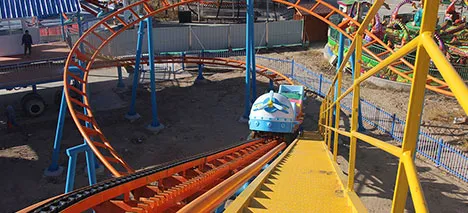- Albanian
- Arabic
- Belarusian
- Bengali
- Czech
- English
- French
- German
- Hebrew
- Hungarian
- Indonesian
- irish
- Italian
- Japanese
- kazakh
- Persian
- Russian
- Thai
- Uzbek
- Vietnamese
roller coasters manufacturers
The Roller Coaster Industry Manufacturers and Their Impact
Roller coasters have long been a staple of amusement parks around the world, captivating thrill-seekers with their gravity-defying loops, heart-stopping drops, and innovative designs. Behind the creation of these adrenaline-inducing rides lies a complex landscape of manufacturers who contribute their expertise, creativity, and engineering prowess. In this article, we will explore some of the prominent roller coaster manufacturers, their unique features, and their impact on the amusement industry.
One of the most recognized names in the roller coaster manufacturing industry is Intamin. Founded in 1967 in Switzerland, Intamin has produced some of the most iconic roller coasters globally, including the record-breaking Kingda Ka at Six Flags Great Adventure in New Jersey. This coaster, which stands at 456 feet, is a prime example of Intamin's commitment to innovation and pushing the limits of roller coaster design. Known for their use of hydraulic launch systems, Intamin has set numerous speed and height records, making them a favorite among thrill-seekers.
The Roller Coaster Industry Manufacturers and Their Impact
For those seeking a more unique experience, the company Zamperla specializes in family-oriented attractions. Founded in Italy in 1966, Zamperla has carved a niche for itself by creating smaller, more accessible coasters that appeal to younger riders and families. Their creations, like the “Spinning Coaster,” offer a gentler thrill while still providing an exhilarating experience. Zamperla's emphasis on inclusivity in amusement parks has allowed them to fill a significant gap in the market, making roller coasters enjoyable for all ages.
roller coasters manufacturers

As the industry evolves, manufacturers are increasingly focusing on advanced technology and sustainability. For instance, manufacturers are incorporating virtual reality into roller coasters, providing riders with an immersive experience that transcends traditional thrills. In addition, eco-friendly designs are becoming more common, with companies like RMC (Rocky Mountain Construction) leading the charge by repurposing and transforming older wooden coasters into hybrid models that combine wooden structures with steel tracks for enhanced durability and safety.
Furthermore, the development of the “dark ride” experience, where roller coasters intertwine with storytelling and themed elements, has gained popularity. Companies like Mack Rides are at the forefront of this trend, creating attractions such as “Harry Potter and the Forbidden Journey” at Universal Studios, where storytelling and technology converge to offer a ride that captivates emotions as much as it does adrenaline.
The impact of these roller coaster manufacturers extends beyond just thrill rides; they also contribute to local economies by driving tourism and creating jobs. Amusement parks invest heavily in these rides, which can cost millions to design and install, creating jobs in construction, maintenance, and operations. Moreover, the thrill of a new, record-breaking roller coaster often draws visitors from far and wide, boosting local businesses and enhancing the appeal of the area as a tourist destination.
In conclusion, roller coaster manufacturers play a vital role in the amusement industry, continually pushing the boundaries of creativity, engineering, and technology. From the exhilarating heights and speeds crafted by Intamin and B&M to the family-friendly rides designed by Zamperla, each manufacturer contributes a unique flavor to the theme park experience. As technology advances and the push for sustainability grows, the future of roller coasters promises even more exciting developments, ensuring that these rides will continue to thrill generations to come.
-
Flume Ride-Hebei Zhipao Amusement Equipment Manufacturing Co., Ltd.|Thrilling Water Attraction&Customizable DesignJul.30,2025
-
Flume Ride - Hebei Zhipao Amusement Equipment | Water Coaster, Thrilling DescentJul.30,2025
-
Flume Ride - Hebei Zhipao | Thrilling Water AttractionJul.30,2025
-
Flume Ride: Thrilling Water Attraction by Hebei Zhipao|Log Flume Manufacturers&Flume Ride DesignJul.30,2025
-
Flume Ride-Hebei Zhipao Amusement Equipment Manufacturing Co., Ltd.|Thrilling Water Coaster, Safe DesignJul.30,2025
-
Flume Ride-Hebei Zhipao Amusement Equipment Manufacturing Co., Ltd.|Thrilling Water Attraction, Safe DesignJul.30,2025
